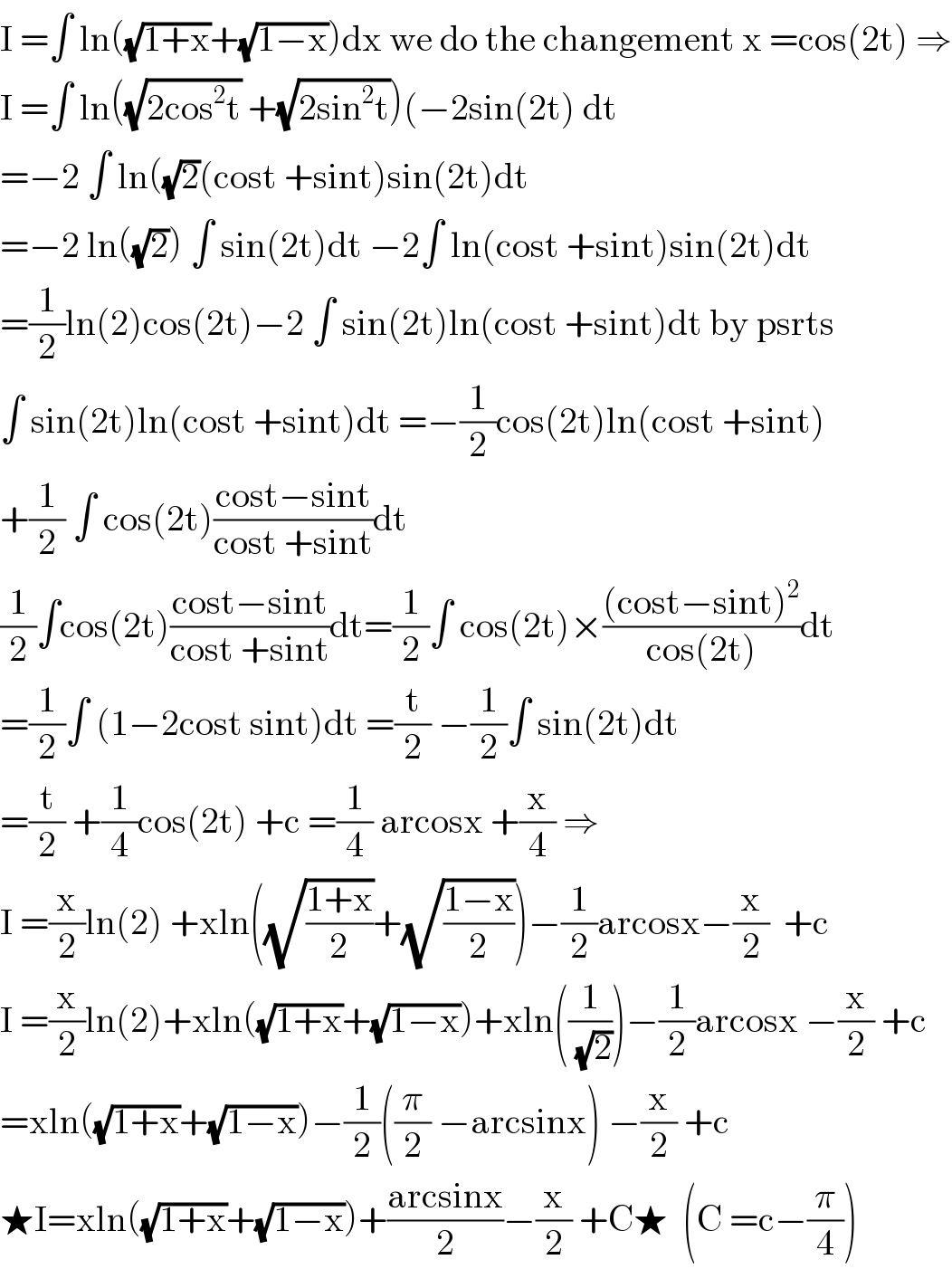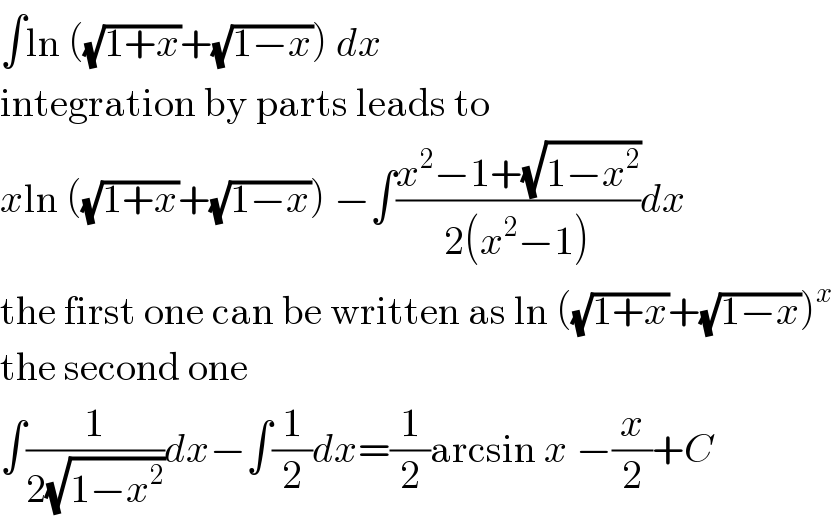
Question and Answers Forum
Question Number 108416 by mathdave last updated on 16/Aug/20

Answered by mathmax by abdo last updated on 16/Aug/20

Answered by Sarah85 last updated on 17/Aug/20

| ||
Question and Answers Forum | ||
Question Number 108416 by mathdave last updated on 16/Aug/20 | ||
 | ||
Answered by mathmax by abdo last updated on 16/Aug/20 | ||
 | ||
| ||
Answered by Sarah85 last updated on 17/Aug/20 | ||
 | ||
| ||